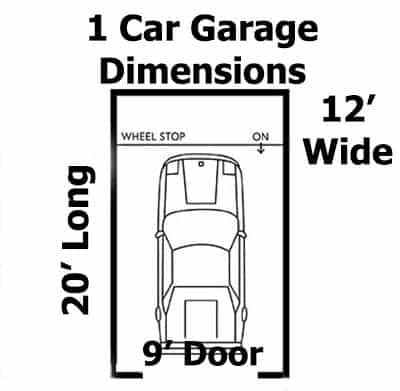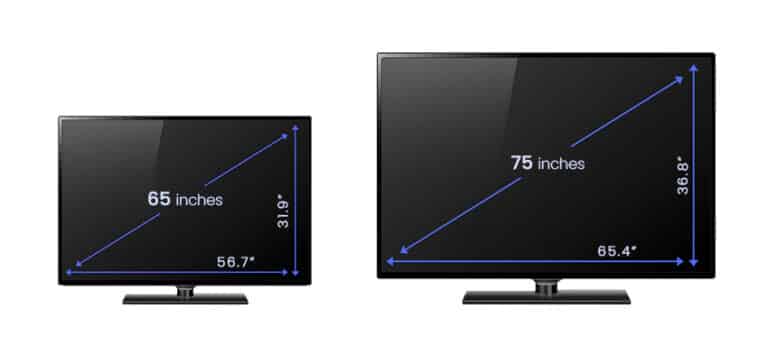Maximize Your Space: Standard Garage Dimensions for 1, 2, 3 & 4 Cars
How big of a garage do you really need? When deciding what size garage is best, there are a few factors that should be taken into consideration to make sure you get the right fit. Below we share the standard garage dimensions including 1, 2, 3 & 4 car sizes and average ceiling height.
First, we need to address several questions to help narrow down the necessities. How many cars do you own? The first factor in deciding the size is how many cars need to be inside. Sometimes, you could have four cars and only need two inside, as the other two can be in the driveway or the street.
Keep in mind that when parking in the garage and driveway, sometimes it can be difficult to maneuver when another vehicle is parked right behind it. This can mean you should consider getting a driveway pad or a carport and driveway to accommodate the amount of vehicles that need to move daily. This is an effective way to park a tall work truck in the driveway, as it does not block anyone parking inside.
You will also need to consider the types of cars you own, as an SUV or truck will take up substantially more room. Will you need extra space for a workshop? Another factor of how big the floorplan needs to be is if you already planned for the cars in the space; what about the stuff?
If there needs to be room for tools and general space to work, you will need to consider the amount of space that needs to be dedicated to the workshop area. This will depend on the typical projects, their storage, and worktop space requirements.
On top of that, the space could potentially be used for outdoor supply or food freezer storage. Whether it is bikes, sporting equipment, extra food storage, you name it; sometimes it is the best place for it to be readily accessible and to keep any bad odors or dirty things out of the home.
Garage Door Dimensions
As a general rule, it is important to leave about two and a half feet from the car to the nearest object, whether that be another car or the wall. This is so the car doors can open, and you can exit the vehicle.
1 Car Garage Dimensions
For single car garages the general size is about 12 feet wide by 20 feet long, and the garage door width should be 9 feet. This fits the average car. SUVs and trucks should be measured, and consider getting a larger door to accommodate bigger vehicles.
 2 Car Garage Dimensions
2 Car Garage Dimensions
For double car garages the general size is about 18-20 feet wide by 20 feet long, and the door width should be 9 feet for each opening if there will be two separate doors, or 16 feet overall to cover both vehicles.
Notice how the 20 feet is the same for both single and double car openings. That is because the cars are to be placed next to each other in these situations, and each car only needs 20 feet of space front to back.
Some styles can stack the cars, such as with a tandem car garage. In that case, the length would be doubled, but stacked garages are extremely atypical as it is difficult to maneuver the vehicles in and out.
Another thing that can change the 20 feet is if there is a desire for a little extra garage storage. Adding some space in front of parked cars can leave a space for trash cans, salt bags, shovels, or even outdoor shoes if the spaces is needed.
 3 Car Garage Dimensions
3 Car Garage Dimensions
For triple car garages, the general size is about 31 feet wide by 20 feet long, and the door width should be 9 feet each if there are three separate doors or 16 feet and 9 feet to cover all vehicles.
There is not a typical option that has all three cars able to use one door. This makes the door extremely wide and potentially not work correctly and is just less structurally sound. There are custom items that can be made per size if neither of these options is what you want.
4 Car Garage Dimensions
A single car garage size is generally about 12 feet by 20 feet, and the door width should be 9 feet each if there are going to be four separate doors or two 16 feet doors or different combinations of 16 and 9 foot increments based on which doors should be opened in unison with which doors.
Each separate door needs a minimum 1.4 foot piece of wall in between it; this area accounts for the clearance space for a person to get in and out of the vehicle, as well as any electrical or structural pieces that need to be added for the garage doors to properly function.
The dimensions can also vary depending on if you have an attached or detached garage. The attached designs share the same roof as the home and, in general, have less room than a detached unit.
Average Garage Height
The average height of a garage door is about 7 feet, and sometimes, they are the same height as interior walls, which is 8 feet. This area is usually based on the location of the house. Detached garages are usually 7 to 8 feet long as they are not dependent on any other aspect.
When a garage is attached to a home, and you have a connecting door from the home to it, the floor heights are different due to the foundations and platforms that separate it from the rest of the home.
In some cases, the second level continues over the parking area, all at the same height as the second level. This can mean the height needs to be a little taller to accommodate the lesser floor height to keep the floor height of the second level all the same.
A taller ceiling can be a bonus for storing bikes one rack from the ceiling. Make sure when installing bike racks overhead that it does not interfere with any above floors or the door, as they typically function using a great deal of overhead space.
Did you find all the information you need about residential garage sizes and door height? If you’re a homeowner with questions about construction or experience to share, please leave your comments below.



 2 Car Garage Dimensions
2 Car Garage Dimensions 3 Car Garage Dimensions
3 Car Garage Dimensions





